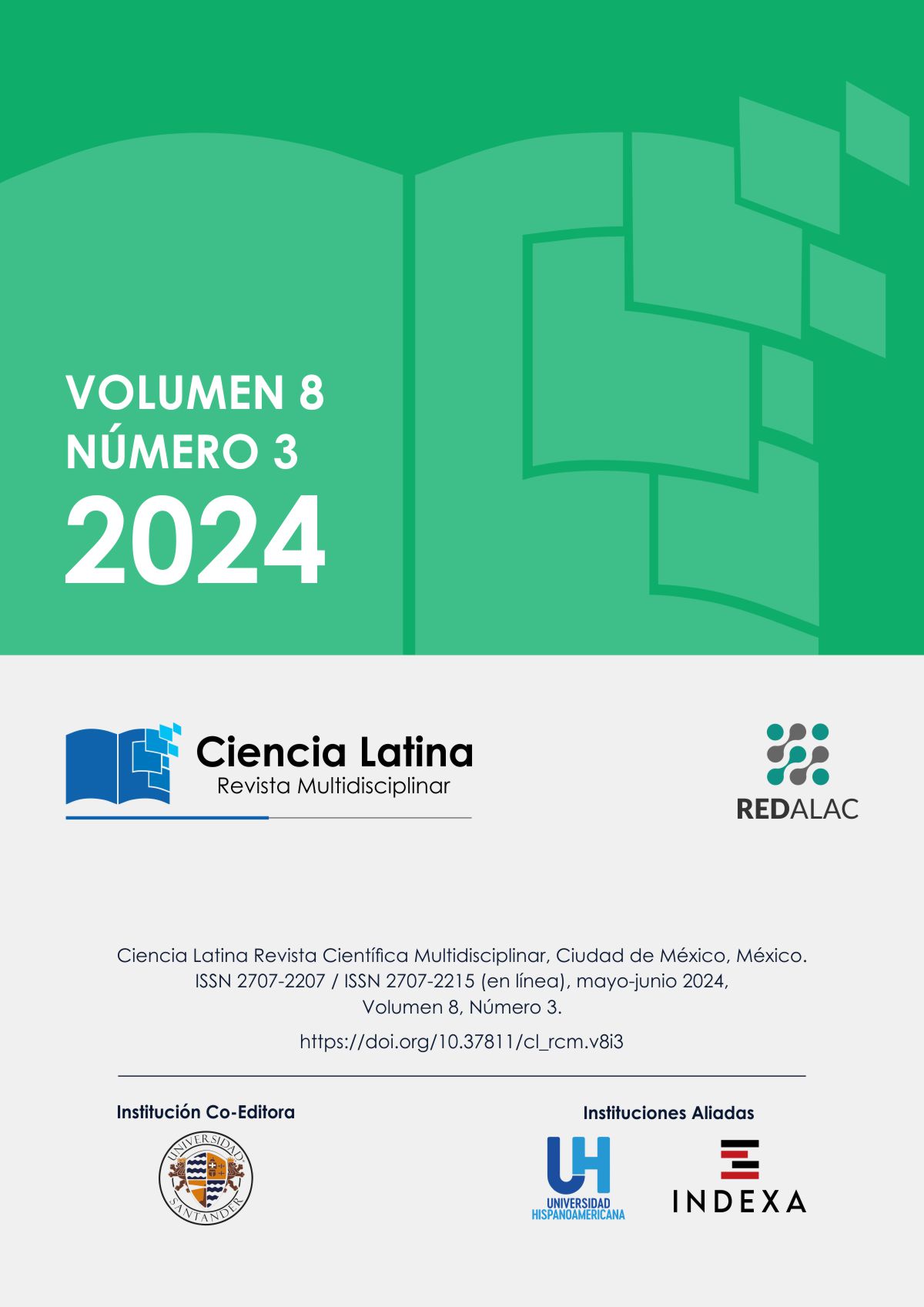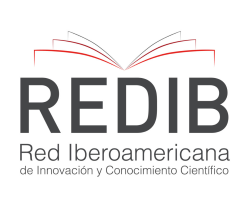Actualización en Anemia de Fanconi: Bases Genéticas, Características Clínicas, Diagnóstico y Tratamiento
Resumen
La anemia de Fanconi es un trastorno hereditario autosómico recesivo, poco frecuente. Se asocia con al menos 22 genes y produce fragilidad cromosómica, lo que implica defectos en la reparación del ADN, que a su vez conlleva a la aparición de tumores sólidos y hematológicos, principalmente leucemia mieloide aguda. El estándar de oro para el diagnóstico es la prueba de fragilidad cromosómica donde se observan anomalías después de ser expuesto a diepoxibutano o a la mitomicina C. El tratamiento comúnmente utilizado es el trasplante de médula ósea, sin embargo, este se asocia con la aparición de otros tumores, por lo que ahora se estudian terapias génicas.
Descargas
Citas
Ayas, M; Al-Hashim, F; Siddiqui, K; Al-Jefri, A; Al-Ahmari, A; Ghemlas, I; Al-Saedi, H; Al-Anazi, A; Khan, H; Qaatan, D & Al-Seradi. (2024). Hematopoietic stem cell transplantation in patients with Fanconi anemia: a report of late effects and psychosocial adjustment in life. Bone Marrow Transplantation, 59(1), 141-143, 2024
Bartlett,A; Wagner, J; Jones, B; Wells, S; Sabulski, A; Fuller, C & Davis, S. (2024). Fanconi Anemia Neuroinflammatory Syndrome (FANS): Brain Lesions and Neurologic Injury in Fanconi Anemia. Blood Advances, 12, 577.
Barua, D; Plecha, M & Muszewska, A. (2024).A mínima Fanconi Anemia complex in early diverging fingí. Sci Rep, 14, 9922. https://doi.org/10.1038/s41598-024-60318-w
Bogliolo, M & Surrallés, J. (2015). Secuenciación del exoma en anemia de Fanconi : del diagnóstico al descubrimiento de un nuevo gen. Universitat Autònoma de Barcelona.
De Castro Ávila, L. F.; Martina, W. D. ; Cândido, L; Inácio, S. A.; Bonfim, C. & de Oliveira Rivas, M. (2014). A study of facial pattern in patients with fanconi anemia. The Cleft Palate-Craniofacial Journal, 51(1),83-89.
Del Valle, J; Rofes, P; Moreno-Cabrera, J. M. ; López-Dóriga, A; Belhadl, S; Vargas-Parra, G; Teulé, A; Cuesta, R; Muñoz, X; Campos, O; Salinas, M; de Cid, R; Brunet, J; González, S; Capellá, G; Pineda, M; Feliubadaló, L & Lázaro, C. (2020). Exploring the role of mutations in Fanconi Anemia genes un hereditary cancer parienta. Cáncer, 12(4), 829.
https://doi.org/10.3390/cancers12040829
Dufour, C & Pierri, F. (2022). Modern management of Fanconi anemia. Hematology Am Soc Hematol Educ Program, 2022(1), 649-657. https://doi.org/10.1182/hematology.2022000393
Escalante-Gómez, C & Jiménez-Torrealba, J. (2008). Anemia de fanconi y embarazo: una combinación inusual. AMC, 50(2), 112-113.
François, P; Rouffiange, L; Schifflers, S; Philippet, P & Chantrain, C. (2024). Diagnosis of Fanconi Anaemia in child with massive pulmonary embolism: case report and literature review. Belgian Journal of Pediatrics, 26(1), 04-29.
Marcos Santana, N. C.; Velasco Pandé de Sena, A. C; da Silva Rocha, P. A.; Almeida de Arruda, J. A.; Torres-Pereira, C. C.; Guimarães-Abreu, L.; Fournier, B.; Warnakulasuriya, S & Aparecida Silva, T. (2024). Oral cancer and oral potentially malignant disorders in patients with Fanconi anemia – A systematic review. Oral oncology, 150, 106699.
https://doi.org/10.1016/j.oraloncology.2024.106699
Martínez-Balsalobre, E; Guervilly, J. H; Asbeck-van der Wijst, J; Pérez-Oliva, A. B. & Lachaud, C. (2023). Beyond current treatment of Fanconi Anemia: What to advances in cell and Gene-based approaches offer? Review. Blood Reviews, 60, 101094.
https://doi.org/10.1016/j.blre.2023.101094
Milleti, G; Strocchio, L; Pagliara, D; Girardi, K; Carta, R; Mastronuzzi, A; Locatelli, F & Nazio, F. (2020). Canonical and noncanonical Roles of Fanconi anemia proteins: Implications in cancer predisposition. Cancers (Basel), 12(2684). http://www.ncbi.nlm.nih.gov/pubmed/32962238
Moreno, O. M; Paredes, A. C.; Suárez-Obando, F & Rojas, A. (2021). A update on Fanconi anemia: Clinical, cytogenetic and molecular appoaches (Review). Biomedical Reports, 15(3). https://doi.org/10.3892/br.2021.1450
Munhoz da Cunha, M; Carvalho Barrero, F; Nichele, S; Trennepohl, J; Ribeiro, L; Loth, G; Koliski, A; de Almeida Pinto, T; Mello, A; Pasquini, R; de Castro Sylvestre, L & Bonfilm, C. (2022). Kidney complications in 107 Fanconi anemia patients submitted to hematopoietic cell transplantation. European Journal of Pediatrics, 1-9.
Peak. J. D., & Noguchi, E. (2022). Fanconi anemia: current insights regarding epidemiology, cancer, and DNA repair. Human Genetics, 141 (12), 1811-1836.
Ramanagouda Ramanagoudr-Bhojappa, R; Tryon, R; Lach, P; Donovan, F; Maxwell, R; Rosenberg, A; MacMillan, M. L., Wagner, J. E.; Auerbach, A. X.; Smogorzewska, S. & Chandrasekharappa, S. C. (2024). FANCA c.3624C>T (p.Ser1208=) is a hypomorphic splice variant associated with delayed onset of Fanconi anemia. Blood Adv, 8(4),899-908.
https://doi.org/10.1182/bloodadvances.2023011888
Repczyńska, A; Jułga, K; Koren, A; Skalska-Sadowska, J; Wysocki, M; Zaucha-Prażmo, M; Drablo, K; Bossowski, A; Dembowska-Bagińska, B; Wachowiak, J; Bucinski, A & Haus, O. (2024). Cytogenetic findings in Polish patients with suspected Fanconi anemia. Advances in clinical and experimental medicine: official organ Wroclaw Medical University, 33(4), 361-368
Sanmartin Matute, N. B. (2023).
Anemia de Fanconi. Características clínicas. Recomiendo, 7(3), 113-133.
https://doi.org/10.26820/recimundo/7.
Shafqat, S; Tariq, E; Parnes, A.C; Dasouki, M; Ahmed, S & Hashmi, S. K. (2021). Role of gene therapy in Fanconi anemia: a systematic and literature review with future directivos. Hematology/Oncology and Stem Cell Therapy, 14(4),290-301
Sheikh, T; Peffer, A; Bellisimo, D; Aarabi, M & Yatsenko, S. (2024). P082: Increased risk of hematolymphoid neoplasms in individuals with heterozygous deletion of a Fanconi anemia gene. Genetics in Medicine, 2(1),100964. https://doi.org/10.1016/j.gimo.2024.100964
Snyder, A; Campbell, K; Lane, A; Mehta, P. A; Myers, K; Davies, S & Koo, J. (2024). Liver abnormalities are frequent and persistent in patients with Fanconi anemia. Blood Adv, 8(6),1427-1438. https://doi.org/10.1182/bloodadvances.2023012215
Steinberg-Shemerp, O; Goldberg, T. A.; Yacobovich, J; Kevin, C; Koren, A; Revel-Vilk; Ben-Ami, T; Kuperman, A. A.; Shkalim Zemer, V; Toren, A; Kapelushnik, J; Ben-Barak, A; Minkin, H; Krasnov, T; Noy-Lotan, S; Dgnany, O & Tamary, H. (2020). Characterization and genotype-phenotype correlation of patients with Fanconi anemia in a multi-ethnic population. Hematológica, 105,(7), 1825-1834. htpp://doi.org/10.3324/haematol.2019.222877
Tang, K.D., Amenábar, J.M., Schussel, J.L. et al. (2024). Profiling salivary miRNA expression levels in Fanconi anemia patients – a pilot study. Odontólogo, 112, 299–308.
https://doi.org/10.1007/s10266-023-00834-9
Xu, H; Zhang,Y; Wang,C; Fu, Z; Lv, Y; Yang, Y; Zhang, Z; Qi, Y; Meng, Y; Yuan, J & Wang, X. (2024). Research progress on the fanconi anemia signaling pathway in non-obstructive azoospermia. Frontiers in Endocrinology,15, 1393111.
Derechos de autor 2024 Adriana Ruiz Rodríguez, Diana Quiroz Ruiz

Esta obra está bajo licencia internacional Creative Commons Reconocimiento 4.0.











.png)




















.png)
1.png)


